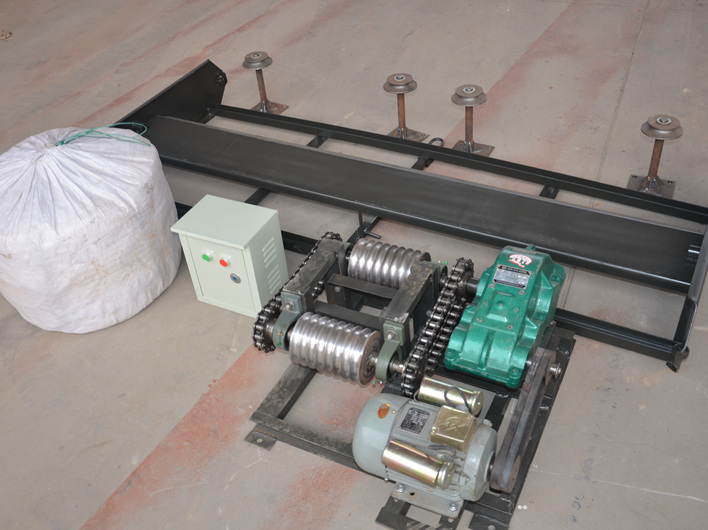Elevated Chicken Coop Design for Optimal Layer Production and Comfort
Dec . 14, 2024 14:13 Back to list
Elevated Chicken Coop Design for Optimal Layer Production and Comfort
The Advantages of Layer Chicken Cages in Poultry Farming
Poultry farming has undergone a significant transformation over the years, with advancements in technology leading to more efficient production methods. Among these innovations, layer chicken cages have emerged as a pivotal development in the industry. These cages, designed specifically for raising laying hens, offer several benefits that enhance productivity, improve animal welfare, and foster sustainable practices in poultry farming.
Maximizing Space and Efficiency
One of the primary advantages of layer chicken cages is their ability to maximize space utilization. Traditional free-range farming can be limited by land availability, leading to overcrowded living conditions for the chickens. Layer cages, on the other hand, allow for vertical stacking, enabling farmers to house a larger number of hens in a smaller footprint. This spatial efficiency is particularly beneficial for commercial poultry operations, where maximizing output while minimizing costs is crucial.
By housing hens in well-structured cages, farmers can effectively manage their flock size without compromising on the quality of care. Each cage is typically equipped with designated areas for feeding, drinking, and laying eggs, which fosters a more organized environment conducive to production. This systematic approach reduces competition for resources, ensuring that each hen can thrive.
Enhanced Production Rates
Layer chicken cages are designed with the needs of laying hens in mind. When hens are provided with a consistent and controlled environment, their production rates significantly improve. Cages help maintain optimal conditions by regulating factors such as light exposure, temperature, and ventilation. Hens are more likely to lay eggs when they are comfortable and not stressed, leading to higher egg production rates.
In addition, layer cages facilitate better management of egg collection. Eggs laid in cages are less likely to be damaged or contaminated, leading to a higher quality product. This not only benefits the producer by reducing losses but also ensures that consumers receive fresher and safer eggs.
Improved Biosecurity
layer chicken cage

One of the challenges facing poultry farmers is the risk of disease outbreaks, which can have devastating effects on the flock and the overall farm. Layer chicken cages enhance biosecurity by minimizing direct contact between birds. In cage systems, the confinement reduces the spread of pathogens that often occur in more free-range environments where hens are exposed to wild birds and other animals.
Furthermore, the design of layer cages allows for easier cleaning and disinfection. Farmers can implement biosecurity measures effectively by regularly sanitizing cages, thus reducing the likelihood of disease transmission. This not only protects the health of the hens but also promotes public health by reducing the risk of zoonotic diseases.
Animal Welfare Considerations
While there has been criticism of confined animal systems, modern layer chicken cages are designed with animal welfare in mind. Many farmers now use enriched cages that provide hens with additional space and resources, such as perches and nesting boxes. These enhancements allow hens to express natural behaviors, reducing stress and improving their quality of life.
Moreover, many regulations and welfare standards are being instituted worldwide to ensure that hens have adequate space and care. By adhering to these guidelines, poultry farmers can offer their birds a comfortable environment while still benefiting from the efficiencies that layer cages provide.
Sustainability and Environmental Impact
Layer chicken cages contribute to sustainable poultry farming practices. By maximizing production efficiency and minimizing resource waste, these systems can help reduce the overall environmental footprint of egg production. Concentrated housing reduces land use and enables farmers to implement better waste management systems, allowing for the recycling of manure into nutrient-rich fertilizers.
In conclusion, layer chicken cages represent a significant advancement in poultry farming, offering numerous benefits for producers, consumers, and the animals themselves. With their ability to maximize space, enhance production rates, improve biosecurity, and promote animal welfare, these systems play a crucial role in the future of sustainable agriculture. As the demand for poultry products continues to rise globally, layer chicken cages will undoubtedly remain a key component in meeting that demand responsibly and efficiently.
-
Automatic Feeding Line System-Pan Feeder Nipple Drinker|Anping County Yize Metal Products Co., Ltd.
NewsJul.29,2025
-
Hot Sale 24 & 18 Door Rabbit Cages - Premium Breeding Solutions
NewsJul.25,2025
-
Automatic Feeding Line System Pan Feeder Nipple Drinker - Anping County Yize Metal Products Co., Ltd.
NewsJul.21,2025
-
Automatic Feeding Line System Pan Feeder Nipple Drinker - Anping County Yize Metal Products Co., Ltd.
NewsJul.21,2025
-
Automatic Feeding Line System - Anping Yize | Precision & Nipple
NewsJul.21,2025
-
Automatic Feeding Line System - Anping Yize | Precision & Nipple
NewsJul.21,2025






